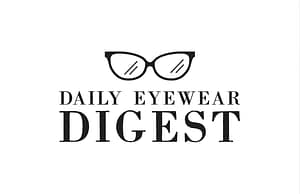The eyewear landscape is transforming at breakneck speed. In 2025, marketing strategies that once dominated the fashion and optical sectors are now obsolete or radically upgraded. With eyewear marketing in 2025 blending artificial intelligence, hyper-personalization, and influencer authenticity, brands must stay agile and innovative to connect with today’s digital-savvy, value-driven consumers.
The Evolution of Eyewear Marketing

Traditional vs. Digital Approaches
Gone are the days when print ads and store promotions were enough to drive eyewear sales. Now, digital campaigns leveraging social media, influencer collaborations, and search engine optimization (SEO) have taken center stage. Brands must be where their audience is—online, mobile, and ready to engage.
Rise of D2C Eyewear Brands
Direct-to-consumer (D2C) brands like Warby Parker, Blenders Eyewear, and Zenni Optical have eliminated middlemen and directly connected with consumers. They use data-driven marketing and virtual platforms to sell style, comfort, and affordability—all from a smartphone screen.
Why 2025 Is a Game-Changer for the Eyewear Industry
Post-Pandemic Consumer Behavior
The pandemic reshaped consumer expectations. Now, convenience and safety dominate purchasing decisions. Customers prefer trying on glasses virtually, reading detailed online reviews, and using AI-assisted guides before buying—right from their homes.
Technology-Driven Shopping Trends
Smart mirrors, virtual try-on apps, and AR filters now enhance how people explore and compare eyewear options. The digital shopping journey has become as immersive and trusted as in-store browsing.
Micro-Influencers as Niche Brand Ambassadors
Benefits Over Macro-Influencers
While celebrity influencers offer reach, micro-influencers deliver relevance. Their smaller, highly engaged audiences are more responsive to authentic recommendations—perfect for niche fashion and lifestyle products like eyewear.
How to Find and Partner with Micro-Influencers
Using platforms like Heepsy, Upfluence, and Influencity, eyewear brands identify creators with the right demographic match. Collaborations often involve storytelling posts, personalized discount codes, and co-created content, making the promotions feel natural and sincere.
The Role of AI in Eyewear Marketing

AI-Generated Models: What They Are
AI-generated models are hyper-realistic, digitally created humans used in advertisements and product showcases. These models reflect diverse ethnicities, facial shapes, and styles—perfect for eyewear brands seeking inclusion without the logistical complexities of traditional shoots.
Virtual Try-Ons and Augmented Reality
Advanced AR allows shoppers to visualize glasses on their faces with perfect alignment and lighting. Companies like Lenskart and FittingBox provide realistic try-on experiences that rival physical testing.
Personalization Through Data-Driven Marketing
Behavioral Analytics
Eyewear brands monitor consumer activity on websites and apps—such as clicks, scrolls, and previous purchases—to suggest frame styles, lens upgrades, or even complementary accessories tailored to individual tastes.
Dynamic Ad Targeting Based on Face Shape
AI tools assess face shape via uploaded photos and recommend frames that match best. These personalized suggestions are integrated into ad creatives, increasing conversion rates and reducing cart abandonment.
Omnichannel Retail Strategy
Syncing Online and Offline Experiences
A successful eyewear marketing strategy in 2025 aligns every channel—websites, mobile apps, physical stores, and even smart kiosks. Customers may browse frames online, test them virtually, and finalize the purchase in-store (or vice versa).
Social Commerce Integration
Instagram Shops, Facebook Marketplace, and TikTok Storefronts are becoming powerful direct sales channels. Interactive shopping via influencer content streamlines the journey from discovery to purchase.
Visual Storytelling and UGC (User-Generated Content)
Harnessing Instagram Reels and TikTok
Short-form video content continues to captivate audiences. Eyewear brands utilize Reels and TikTok trends to showcase “glow-ups” with stylish frames, behind-the-scenes designs, and influencer fashion matches.
Customer Reviews as Marketing Collateral
Reviews, especially those with selfies or video testimonials, serve as social proof. Smart brands amplify these through email campaigns, ads, and product pages.
SEO and Content Marketing for Eyewear Brands

Blogging, YouTube, and Podcasts
Content that educates and entertains earns trust. Brands run blogs on choosing glasses by face shape, YouTube style guides, and podcasts featuring industry experts and eye-care professionals.
Local SEO for Optical Stores
Optimizing for “opticians near me” and keeping Google Business Profiles updated helps drive in-store traffic, especially for services like eye exams or prescription updates.
Sustainability Messaging in Eyewear Marketing
Eco-Friendly Frames as a Differentiator
With environmental awareness at an all-time high, eyewear brands that use biodegradable materials, recycled metals, or sustainable packaging earn more loyalty.
Marketing Transparency and Authenticity
Consumers demand truth. Brands openly share production practices, sourcing policies, and carbon footprints, using transparency as a trust-building tool.
Brand Collaborations and Limited Drops
Creating Urgency and Hype
Eyewear collabs with musicians, designers, or even fictional characters generate excitement. Limited-edition collections with countdown timers and VIP waitlists create FOMO-fueled demand.
Co-Branded Collections with Influencers
Influencer-designed collections blend celebrity credibility with brand visibility. These partnerships offer storytelling opportunities and organic reach expansion.
Future-Proofing Eyewear Brands with AI Tools
Predictive Customer Analytics
Brands use predictive AI to anticipate restocking needs, analyze return trends, and offer timely re-engagement campaigns. It helps personalize upsells, like anti-glare lenses for commuters.
AI for Visual Merchandising
Smart shelving and displays adjust based on customer demographics and behaviors. Digital screens show trending frames tailored to whoever walks in—powered by real-time analytics.
Measuring ROI of Modern Eyewear Campaigns
KPIs for Influencer and AI Campaigns
Marketers focus on engagement rates, conversion rates, cost-per-click (CPC), and return on ad spend (ROAS). AI allows real-time tracking and forecasting of campaign performance.
Attribution Models and Analytics Tools
Multi-touch attribution, heatmaps, and sentiment analysis tools help brands understand which touchpoints matter most, ensuring every marketing dollar counts.
Legal and Ethical Considerations

Using AI-Generated Faces Responsibly
With synthetic influencers and AI models, transparency is key. Ethical brands disclose their use and avoid misleading consumers, aligning with international marketing standards.
Disclosure Rules for Influencers
As per FTC and international guidelines, influencers must clearly tag paid promotions and sponsorships. Failing to do so could result in penalties and reputational damage.
Case Studies: Eyewear Brands Doing It Right
Warby Parker’s AR Innovations
Warby Parker was among the first to integrate realistic virtual try-ons into their mobile app, reducing returns and boosting customer satisfaction.
Gentle Monster’s AI Campaigns
Known for avant-garde styles, Gentle Monster uses AI models in surreal campaigns that blend fashion with futuristic art, garnering viral engagement worldwide.
Expert Predictions: What’s Next in Eyewear Marketing?
Virtual Stores in the Metaverse
With platforms like Meta and Roblox expanding, brands will create fully immersive, 3D eyewear boutiques where avatars can try and buy virtual and physical frames.
The Rise of Synthetic Influencers
Brands are investing in virtual influencers—like Lil Miquela—who never age, work 24/7, and can be tailored to specific demographics without the unpredictability of human creators.
FAQs About Eyewear Marketing in 2025
1. How effective are micro-influencers in eyewear marketing?
Extremely effective—micro-influencers bring higher engagement and trust, especially in niche markets like fashion and eyewear.
2. What’s the ROI on AI-generated models compared to real ones?
AI models are cost-effective, diverse, and scalable. While initial investments are high, they offer long-term ROI through reuse and personalization.
3. Can small brands afford virtual try-on technology?
Yes, tools like ARKit (Apple) and FittingBox offer scalable solutions tailored for small to mid-sized brands.
4. Is sustainability a real differentiator in 2025?
Absolutely. Eco-conscious consumers prefer brands with authentic green practices, making sustainability a strong competitive edge.
5. How do eyewear brands ensure transparency in influencer partnerships?
They require disclosure tags like #ad or #sponsored and often collaborate with influencers aligned with their brand ethics.
6. Are virtual stores in the metaverse actually being used?
Yes. Early adopters are already testing virtual eyewear experiences, and adoption is expected to grow with tech advancement.
Conclusion: Adapting to the Future of Eyewear Marketing
In 2025, the eyewear market is no longer just about frames—it’s about experiences, personalization, and innovation. From AI models to data-driven ads and from TikTok stars to synthetic influencers, staying relevant means embracing change. Brands that integrate these futuristic tools while staying rooted in trust and transparency will lead the next wave of eyewear excellence.

